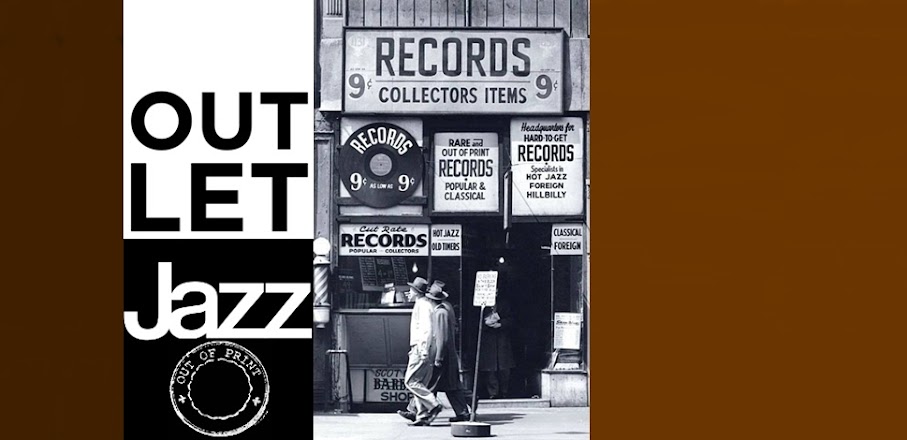Harry Lookofsky was born in Paducah, Kentucky in 1913 and studied classical violin in St. Louis where he joined the St. Louis Symphony Orchestra in the mid-1930s. An early admirer of Joe Venuti, Lookofsky eventually became recognized as one of the earliest accomplished bebop jazz violinists. His technique became particularly recognized on his album Stringsville. Lookofsky was one of many early jazz violinists who occasionally played tenor violin, an instrument he cited for its similar tonal qualities to the tenor saxophone. Another relatively unknown unique characteristic about Lookofsky's playing is that the bebop solos on Stringsville were completely written out and arranged as opposed to improvised as most jazz musicians do. An accomplished studio musician, Lookofsky also experimented heavily with multitrack recording in order to produce a unique sound with several overlaid violin tracks meant to imitate the sound of a horn section in a big band orchestra.
Following his departure from St. Louis in 1938, Lookofsky joined the NBC Symphony Orchestra under Arturo Toscanini for a time while continuing to play jazz on the side. He continued his career as a classical symphony violinist later as concertmaster at ABC following Toscanini's retirement in 1954.
Stringsville was Lookofsky's one major feature release. Aside from his classical and studio recording work, he was more often a contributing artist and/or arranger on other's albums. Over the years, his many jazz collaborators included Quincy Jones, Jaco Pastorius, Sarah Vaughan, George Benson, and Freddie Hubbard. *wikipedia.org*
The violin as a solo instrument has been jazz's forgotten child. In the swing period there were a few violinists (Joe Venuti, Ray Nance, Eddie South and Stéphane Grappelly, for instance) who made significant contributions to the jazz scene, but one looks for it in modern jazz in vain. Many people seemed to feel that the violin did not "belong" — and the violinist often tried to justify himself in the jazz context by using his instrument for comic effect rather than for serious music-making.
Harry Lookofsky's Stringsville is a bold and brilliantly successful attempt to blend strings with a modern jazz ensemble as if they were just so many horns. He has
proved for once and for all that the violin can swing. Being the versatile musician that he is, he proves that the viola and tenor violin can swing, too! By means of multiple tracking, he keeps as many as a dozen string lines going at once. From the way Bob Brookmeyer and the other musicians on this date were playing you can tell that they were excited with the sounds Harry was producing. This was no dull academic experiment; it was lively communication, it was jazz.
*Gary Kramer (liner notes)*
Stringsville challenges the essential rules and definitions of bebop like few records before or since — not only does Harry Lookofsky wield as his weapons violins and violas, but his music hinges as much on technological innovation as it does on technical prowess. Lookofsky transcends contemporaries like Stuff Smith and Stéphane Grappelli for sheer artistry, conjuring remarkably athletic solos rooted in the traditions of classical music but with the creative phrasing and rhythmic intensity of bop -- his performances boast a dark, dramatic edge that pushes the violin into a bold new dimension. No less revelatory is Lookofsky's mastery of tape manipulation: for each track he contributes multiple layers of accompaniment that further establish Stringsville as a truly singular proposition. But it's an approach that by definition runs counter to jazz's improvisational ethos, posing myriad questions about the nature of music and the merits of a critical hierarchy that favors following the rules over breaking them. *Jason Ankeny*
Side 1
1 - 'Round Midnight
(Hanighen, Williams, Monk)
2 - Moose The Mooche
(Charlie Parker)
3 - I Let A Song Go Out Of My Heart
(Ellington, Mills, Redmond, Nemo)
4 - Little Willie Leaps
(Miles Davis)
Side 2
5 - Move
(Denzil Best)
6 - Champagne Blues
(Bob Brookmeyer)
7 - Give Me The Simple Life
(Bloom, Ruby)
8 - Dancing On The Grave
(Bob Brookmeyer)
Harry Lookofsky (violins, violas and tenor violins) with
#2, #4, #6, #7, #8:
Bob Brookmeyer (valve trombone [#2, #4, #6, #8]), Hank Jones (piano), Paul Chambers (bass), Elvin Jones (drums).
Recorded in New York City, January 20, 1959.
#1, #3, #5:
Hank Jones (piano), Milt Hinton (bass), Elvin Jones (drums).
Recorded in New York City, June 22, 1959.


https://1fichier.com/?9uh0gq22phsxpxi7ctj4
ReplyDeleteEsto si que era totalmente desconocido para mi. Muy, muy interesante. Gracias blbs. A ver como suena.
ReplyDeleteNice to hear. Thank you, blbs.
ReplyDeleteolá,
ReplyDeletebrand new for me
thanks a million
joao
Grupo sorpresa. Gracias,
ReplyDelete